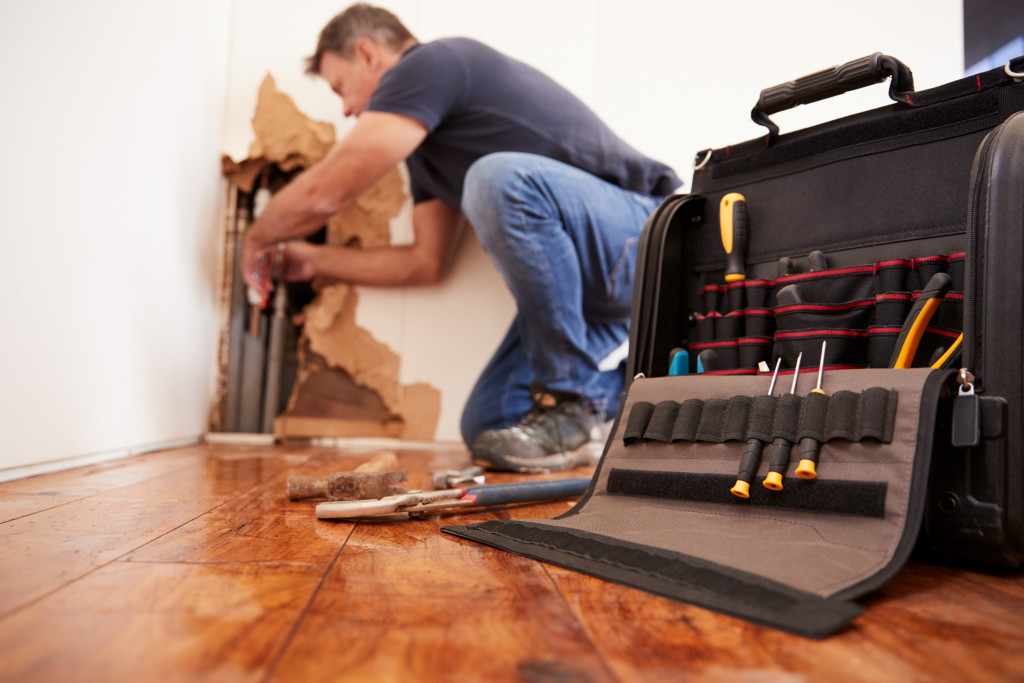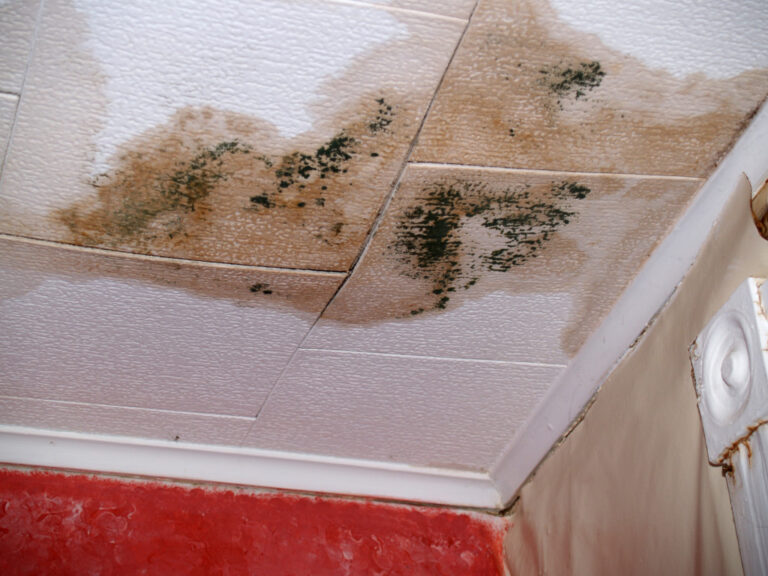- Water damage can significantly impact businesses, causing disruptions and financial losses, but prompt action can mitigate these effects.
- Rapid identification of the water source, swift water extraction, and complete drying are crucial steps in addressing water damage.
- Professional water damage restoration services offer comprehensive clean-up, restoration, and assistance with insurance claims, alleviating business owners’ burdens.
- Post-water damage, extensive cleaning and sanitizing are necessary to restore the affected area to its pre-damage state and ensure a safe, healthy environment.
As a business owner, you understand how crucial maintaining a safe and operational environment is. However, water damage can significantly threaten your establishment, often causing unexpected disruptions. Whether it’s from severe weather conditions, plumbing issues, or HVAC problems, the impact can be substantial, potentially affecting your inventory, equipment, and the overall structure. Understanding and addressing these issues promptly is essential to minimize downtime and financial loss.
Immediate Action
When water damage strikes, immediate and effective action is key to curbing its destructive effects and avoiding the potential for secondary damage such as mold growth or structural instability. Here are some tips:
Identify the Source
The first step in mitigating water damage is identifying the source of the leak. This can range from a roof leak during a storm, a burst pipe, or a faulty appliance. Sometimes the origin is evident, like a flood from a severe storm. Other times it may require more detective work, such as for a slow pipe leak within a wall.
Once the source is discovered, it must be dealt with immediately to stop further water intrusion. For larger problems, it’s typically recommended to involve a professional who can assess the situation, provide a plan of action, and start the recovery process. Remember, the sooner the water source is stopped, the less damage your business will incur.
Water Extraction
The next crucial step in addressing water damage is swift water extraction. Water can seep into structural materials as it satiates your property, causing extensive and potentially irreparable harm. Early and thorough water removal is essential in mitigating this damage. Professionals typically employ industrial-grade water vacuums and powerful pumps for rapid water extraction.
This process not only helps to prevent further water damage but also accelerates the drying process, which is vital in inhibiting the growth of mold and mildew. After water extraction, your property may look dry, but some materials can be wet.
It’s essential to ensure complete drying to avoid long-term damage and the potential for mold growth. Aiming fans and dehumidifiers in wet areas can help speed up drying. Alternatively, professionals may use more advanced methods such as thermal imaging to ensure complete dryness.
Utilize a Water Damage Restoration Service

When water damage is extensive or the drying process is complicated, a professional water damage restoration service is highly advantageous. These experts can effectively address and rectify all aspects of water damage, offering services beyond initial clean-up to complete restoration and even renovation if necessary.
They are equipped with specialized tools and have the expertise to ensure thorough drying and remediation, thereby preventing any long-term damage or mold growth. Moreover, they can help you navigate insurance claims, providing essential documentation of damages and remediation costs.
By enlisting a professional service, business owners can focus on their core operations, ensuring the restoration process is handled efficiently and effectively. Hiring professionals also gives peace of mind knowing that the property will be restored to its pre-damage condition, minimizing business interruption and financial impact.
Dry and Dehumidify
After the water extraction phase, drying and dehumidifying the area is critical in the water damage restoration process. This procedure is crucial to eliminate any remaining moisture in the building materials and indoor air, which can lead to further damage and mold growth if left untreated.
Industrial air movers and dehumidifiers are typically used to expedite this process, effectively removing moisture from plaster, paint, carpet, wood, and drywall. Besides, dehumidification helps reduce the air’s humidity level, creating an environment unfavorable for mold spores to grow.
Regular monitoring of the humidity levels and moisture content in the structural materials is crucial to ensure complete drying. If this process is not thoroughly carried out, it might leave your business vulnerable to additional damage, and subsequent repair costs, down the line. Therefore, it’s always recommended to involve professionals who can ensure accurate and complete drying and dehumidification.
Cleaning and Sanitizing
After water damage, the cleaning and sanitizing phase is crucial in restoring the affected area to its pre-damage state. This involves removing debris, cleaning all surfaces, and sanitizing the area to eliminate potentially harmful bacteria or microbes that may create a health hazard.
Special attention is given to removing odors that can linger after water damage, using professional-grade air scrubbers and fogging equipment. Moreover, personal belongings damaged by water, such as furniture or office equipment, are cleaned, restored, or replaced as necessary. This meticulous process ensures the area is safe, clean, and ready for use again.
It’s advisable to use professional cleaning services, as they have the expertise and equipment to ensure a thorough and deep clean that may not be achieved with regular cleaning methods. This step not only helps restore the physical condition of your business but also helps maintain a healthy environment for you and your employees.
Insurance Claim

Dealing with insurance claims following water damage can be tedious and overwhelming. It’s critical to notify your insurance provider about the incident and begin the claims process immediately. Document the damage thoroughly, taking photographs or videos of the affected area before any cleanup or repair work commences, as this evidence can support your claim.
Maintain records of all related expenses, including restoration services, equipment rentals, and temporary relocation costs. A professional can provide necessary documentation, assist in claim submission, and liaise with insurance adjusters.
Their expertise can help streamline the process, ensuring you receive a fair settlement to cover your damages and restoration expenses. Remember, every insurance policy differs, so it’s essential to understand the specifics of your coverage regarding water damage.
In conclusion, proactively handling water damage is crucial to minimizing disruption and financial impact on your business. Act promptly, involve professionals, and thoroughly document the damage for insurance claims. Remember, time is of the essence. Protect your business now and avoid potential damage in the future.




